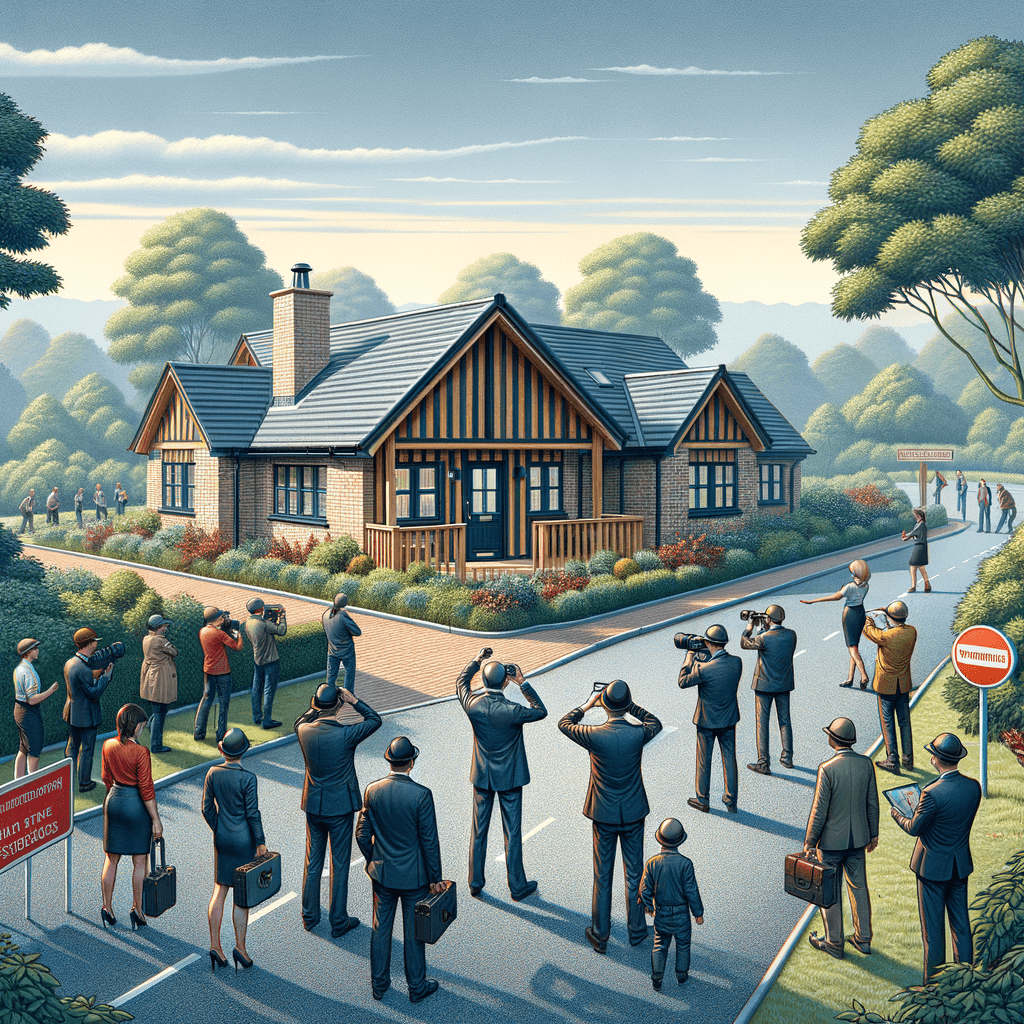Unveiling the RTB Temporary Bungalow: A Comprehensive Guide for UK Home Buyers and Investors
Understanding the RTB Temporary Bungalow
The RTB Temporary Bungalow, a unique piece of British architectural history, stands as a testament to the ingenuity and resourcefulness of post-war Britain. Manufactured by Richard Thomas & Baldwins in the 1940s, this singular structure was designed to address the urgent housing needs of the time. As a prospective home buyer or investor, understanding the intricacies of this property type is crucial for making informed decisions.
Historical Context and Manufacturing Details
In the aftermath of World War II, the UK faced a severe housing shortage. The government sought quick and efficient solutions to accommodate the displaced population. Enter the RTB Temporary Bungalow, a prefabricated structure designed for rapid assembly and deployment. Richard Thomas & Baldwins, a prominent steel manufacturer, took on the challenge, producing this unique dwelling.
The RTB Temporary Bungalow was a one-off production, making it a rare find in today’s property market. Its alternative names, Richard Thomas & Baldwins or RTB, reflect its origins and the innovative spirit of its creators. While the exact location of this bungalow remains elusive, its historical significance is undeniable.
Architectural Characteristics and Design
The RTB Temporary Bungalow is a detached structure, characterized by its shallow pitch gable roof covered with profiled metal sheets. The external walls are similarly clad in flat metal sheets, giving the bungalow a distinctive industrial appearance. This design choice was not merely aesthetic; it was a practical solution to the material shortages of the time.
Despite its temporary designation, the RTB Bungalow was built to last, with a robust steel frame providing structural integrity. However, the use of metal cladding presents unique challenges, particularly in terms of insulation and weatherproofing. Understanding these characteristics is essential for anyone considering purchasing or investing in such a property.
Potential Hazards and Risks
While the RTB Temporary Bungalow is a fascinating piece of history, it is not without its risks. The use of metal cladding can lead to issues with condensation and thermal bridging, potentially resulting in dampness and mould. Additionally, the steel frame, if not properly maintained, may be susceptible to corrosion.
It is important to note that the RTB Temporary Bungalow is not classified as defective under the Defective Premises Act. However, its unique construction and age necessitate careful inspection and maintenance to ensure its continued habitability.
Inspection and Assessment Guidelines
For surveyors and potential buyers, inspecting an RTB Temporary Bungalow requires a keen eye and a thorough understanding of its construction. While the Building Research Establishment (BRE) has not specifically investigated this property type, guidance can be found in publications such as “Steel Framed and Steel Clad Houses: Inspection and Assessment” (BR 113), “Inspecting Steel Houses” (IP 14/87), and “Maintaining and Improving Steel Houses” (IP 15/87).
When inspecting an RTB Temporary Bungalow, pay close attention to the condition of the metal cladding and the steel frame. Look for signs of corrosion, particularly around joints and connections. Check for evidence of dampness or mould, which may indicate issues with insulation or ventilation. Additionally, assess the overall structural integrity of the bungalow, ensuring that it remains safe and stable.
Construction Details and Variants
The construction details of the RTB Temporary Bungalow are somewhat elusive, with many aspects remaining unknown. The substructure, external walls, separating walls, partitions, ground floor, first floor, ceilings, and roof are all areas that require careful investigation during an inspection.
Despite the lack of detailed information, the RTB Temporary Bungalow remains a unique and intriguing property type. Its singular nature means that there are no known variants, making each inspection a unique challenge and opportunity for discovery.
Typical Defects and Maintenance Considerations
As with any property, the RTB Temporary Bungalow is subject to wear and tear over time. Common defects include corrosion of the steel frame, deterioration of the metal cladding, and issues with insulation and ventilation. Regular maintenance is essential to address these issues and preserve the integrity of the structure.
To maintain an RTB Temporary Bungalow, consider the following steps:
-
Regular Inspections: Conduct thorough inspections at least once a year to identify any emerging issues. Pay particular attention to areas prone to corrosion and dampness.
-
Corrosion Prevention: Apply protective coatings to the steel frame and metal cladding to prevent corrosion. Ensure that all joints and connections are properly sealed to prevent moisture ingress.
-
Insulation and Ventilation: Improve insulation and ventilation to prevent condensation and dampness. Consider installing additional insulation in the roof and walls, and ensure that ventilation systems are functioning effectively.
-
Repairs and Upgrades: Address any defects promptly to prevent further deterioration. Consider upgrading the property with modern materials and technologies to improve energy efficiency and comfort.
Conclusion
The RTB Temporary Bungalow is a unique and historically significant property type that offers both challenges and opportunities for home buyers and investors. Understanding its construction, potential hazards, and maintenance requirements is essential for making informed decisions.
At Flettons, we’re committed to safeguarding your investment. When considering a property purchase, trust our seasoned expertise to reveal any hidden threats. For a thorough building survey, get your instant quote through our quote calculator or reach out directly at 0203 691 0451. Your home’s safety is our top priority.

